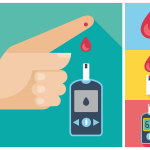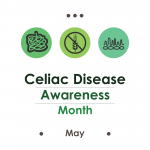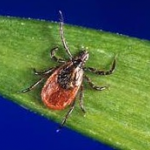People who commit suicide tend to have shorter telomeres and excess mitochondrial DNA. While these changes are not likely to be responsible for them committing suicide, they instead could serve as a biomarker for risk of suicide.
Disease
People with type 2 diabetes who are not using insulin, are typically instructed to monitor their blood glucose levels regularly. But a new study suggests that doing so may not provide any long-term benefits for controlling those levels. This could be the end of what has been the standard of care for these patients.
Federal health officials have identified a clear link between the increase in domesticated chickens and the rise in Salmonella incidents. And the statistics indicate that close contact with these adorable chicks and egg-laying birds is accelerating the spread of disease to humans in the home.
The headlines are scary — even one daily alcohol-containing drink causes an increased risk of breast cancer (oh my!) But a closer look at the study giving rise to such headlines should help calm those fears, at least a little.
The deaths of Roger Ailes, one of the founders of Fox News, and the actress Natasha Richardson both died following a head trauma. Here we explain two specific types of intracranial bleeding that ended their lives.
American Council Board Advisor Jerry Cutler takes a look at medical situations that should prompt us to re-evaluate the application of the linear dose-response model.
Roughly 30-40% of the population has a genetic predisposition to celiac disease. However the amount of people who actually have it is about only 1%. Beyond genetics, what makes this autoimmune disorder affect those in this group? A new study suggests it might be a viral infection – one that often goes unnoticed.
High-profile incidents in which a mentally ill person commits a violent crime has led to the stereotype that these struggling people all pose a dire threat to society. But a team of researchers, studying data from more than 75,000 patients, has developed a model that accurately predicts which patients are unlikely to become violent.
Reports from around the country – mostly in the northern half of the U.S., where ticks thrive – reveal that 2017 is shaping up to be a pretty bad tick season. The reasons have to do with the combination of a relatively mild winter, and an active and growing population among mice and deer. Oh, and an abundance of acorns.
With warm weather, it's necessary to be aware of the usual tick-transmitted suspects, Lyme disease and the West Nile virus. These are nasty enough, but there's a bad boy out there that makes them look like creamed spinach. Meet the Powassan virus. It is pure evil.
Traveling to Italy in the near future? You might want to add "get up to date on your measles vaccines" to your to-do list before jetting away. That's due to a new CDC recommendation, since there's an outbreak currently taking place in Europe's pasta-and-wine paradise.
A new paper published in the journal Open Forum Infectious Diseases showed that 3 percent of men who undergo prostate biopsies end up being hospitalized within a month. Worse, half of those hospitalizations are due to an infection – and 45 patients died.











